Investigation on Deformation Mechanisms of NiTi Shape Memory Alloy Tube under Radial Loading
Abstract
:1. Introduction
2. Materials and Methods
3. Mechanical Analysis of NiTi SMA Tube under Radial Loading
3.1. Geometric Equation between Strain and Displacement
3.2. Equilibrium Equation under Static Inner Pressure
3.3. Constitutive Equation between Stress and Strain
4. Results and Discussion
5. Conclusions
Acknowledgments
Author Contributions
Conflicts of Interest
References
- Otsuka, K.; Ren, X. Physical metallurgy of Ti–Ni-based shape memory alloys. Prog. Mater. Sci. 2005, 50, 511–678. [Google Scholar] [CrossRef]
- Robertson, S.W.; Ritchie, R.O. In vitro fatigue–crack growth and fracture toughness behavior of thin-walled superelastic Nitinol tube for endovascular stents: A basis for defining the effect of crack-like defects. Biomaterials 2007, 28, 700–709. [Google Scholar] [CrossRef] [PubMed]
- Jee, K.; Han, J.; Jang, W. A method of pipe joining using shape memory alloys. Mater. Sci. Eng. A 2006, 438, 1110–1112. [Google Scholar] [CrossRef]
- Wang, L.; Rong, L.; Yan, D.; Jiang, Z.; Li, Y. DSC study of the reverse martensitic transformation behavior in a shape memory alloy pipe-joint. Intermetallics 2005, 13, 403–407. [Google Scholar] [CrossRef]
- Wu, M.H. Fabrication of nitinol materials and components. Mater. Sci. Forum 2002, 285–292. [Google Scholar] [CrossRef]
- Yoshida, K.; Watanabe, M.; Ishikawa, H. Drawing of Ni–Ti shape-memory-alloy fine tubes used in medical tests. J. Mater. Process. Technol. 2001, 118, 251–255. [Google Scholar] [CrossRef]
- Yoshida, K.; Furuya, H. Mandrel drawing and plug drawing of shape-memory-alloy fine tubes used in catheters and stents. J. Mater. Process. Technol. 2004, 153, 145–150. [Google Scholar] [CrossRef]
- Müller, K. Extrusion of nickel–titanium alloys Nitinol to hollow shapes. J. Mater. Process. Technol. 2001, 111, 122–126. [Google Scholar] [CrossRef]
- Jiang, S.Y.; Zhang, Y.Q.; Zhao, Y.N.; Tang, M.; Li, C.F. Finite element simulation of ball spinning of NiTi shape memory alloy tube based on variable temperature field. Trans. Nonferrous Met. Soc. China 2013, 23, 781–787. [Google Scholar] [CrossRef]
- Jiang, S.Y.; Zhao, Y.N.; Zhang, Y.Q.; Tang, M.; Li, C.F. Equal channel angular extrusion of NiTi shape memory alloy tube. Trans. Nonferrous Met. Soc. China 2013, 23, 2021–2028. [Google Scholar] [CrossRef]
- Sun, Q.-P.; Li, Z.-Q. Phase transformation in superelastic NiTi polycrystalline micro-tubes under tension and torsion–from localization to homogeneous deformation. Int. J. Solids Struct. 2002, 39, 3797–3809. [Google Scholar] [CrossRef]
- Li, Z.; Sun, Q. The initiation and growth of macroscopic martensite band in nano-grained niti microtube under tension. Int. J. Plast. 2002, 18, 1481–1498. [Google Scholar] [CrossRef]
- Mao, S.; Luo, J.; Zhang, Z.; Wu, M.; Liu, Y.; Han, X. Ebsd studies of the stress-induced B2–B19′ martensitic transformation in NiTi tubes under uniaxial tension and compression. Acta Mater. 2010, 58, 3357–3366. [Google Scholar] [CrossRef]
- Jiang, D.; Bechle, N.J.; Landis, C.M.; Kyriakides, S. Buckling and recovery of NiTi tubes under axial compression. Int. J. Solids Struct. 2016, 80, 52–63. [Google Scholar] [CrossRef]
- Jiang, D.; Landis, C.M.; Kyriakides, S. Effects of tension/compression asymmetry on the buckling and recovery of NiTi tubes under axial compression. Int. J. Solids Struct. 2016, 100, 41–53. [Google Scholar] [CrossRef]
- Bechle, N.J.; Kyriakides, S. Localization in NiTi tubes under bending. Int. J. Solids Struct. 2014, 51, 967–980. [Google Scholar] [CrossRef]
- Wang, Y.; Yue, Z.; Wang, J. Experimental and numerical study of the superelastic behavior on NiTi thin-walled tube under biaxial loading. Comput. Mater. Sci. 2007, 40, 246–254. [Google Scholar] [CrossRef]
- Bechle, N.J.; Kyriakides, S. Evolution of localization in pseudoelastic NiTi tubes under biaxial stress states. Int. J. Plast. 2016, 82, 1–31. [Google Scholar] [CrossRef]
- Bechle, N.J.; Kyriakides, S. Evolution of phase transformation fronts and associated thermal effects in a NiTi tube under a biaxial stress state. Extreme Mech. Lett. 2016, 8, 55–63. [Google Scholar] [CrossRef]
- Rivin, E.I.; Sayal, G.; Singh Johal, P.R. “Giant superelasticity effect” in NiTi superelastic materials and its Applications. J. Mater. Civ. Eng. 2006, 18, 851–857. [Google Scholar] [CrossRef]
- Zhang, K.; Zhang, H.J.; Tang, Z.P. Experimental study of thin-walled TiNi tubes under radial quasi-static compression. J. Intell. Mater. Syst. Struct. 2011, 22, 2113–2126. [Google Scholar]
- Elibol, G.; Wagner, M.F.X. Investigation of the stress-induced martensitic transformation in pseudoelastic NiTi under uniaxial tension, compression and compression–shear. Mater. Sci. Eng. A 2015, 621, 76–81. [Google Scholar] [CrossRef]
- Liu, Y.; Xie, Z.; Van Humbeeck, J.; Delaey, L. Asymmetry of stress-strain curves under tension and compression for NiTi shape memory alloys. Acta Mater. 1998, 46, 4325–4338. [Google Scholar] [CrossRef]
- Liu, Y.; Xie, Z.; Van Humbeeck, J.; Delaey, L. Some results on the detwinning process in NiTi shape memory alloys. Scr. Mater. 1999, 41, 1273–1281. [Google Scholar] [CrossRef]
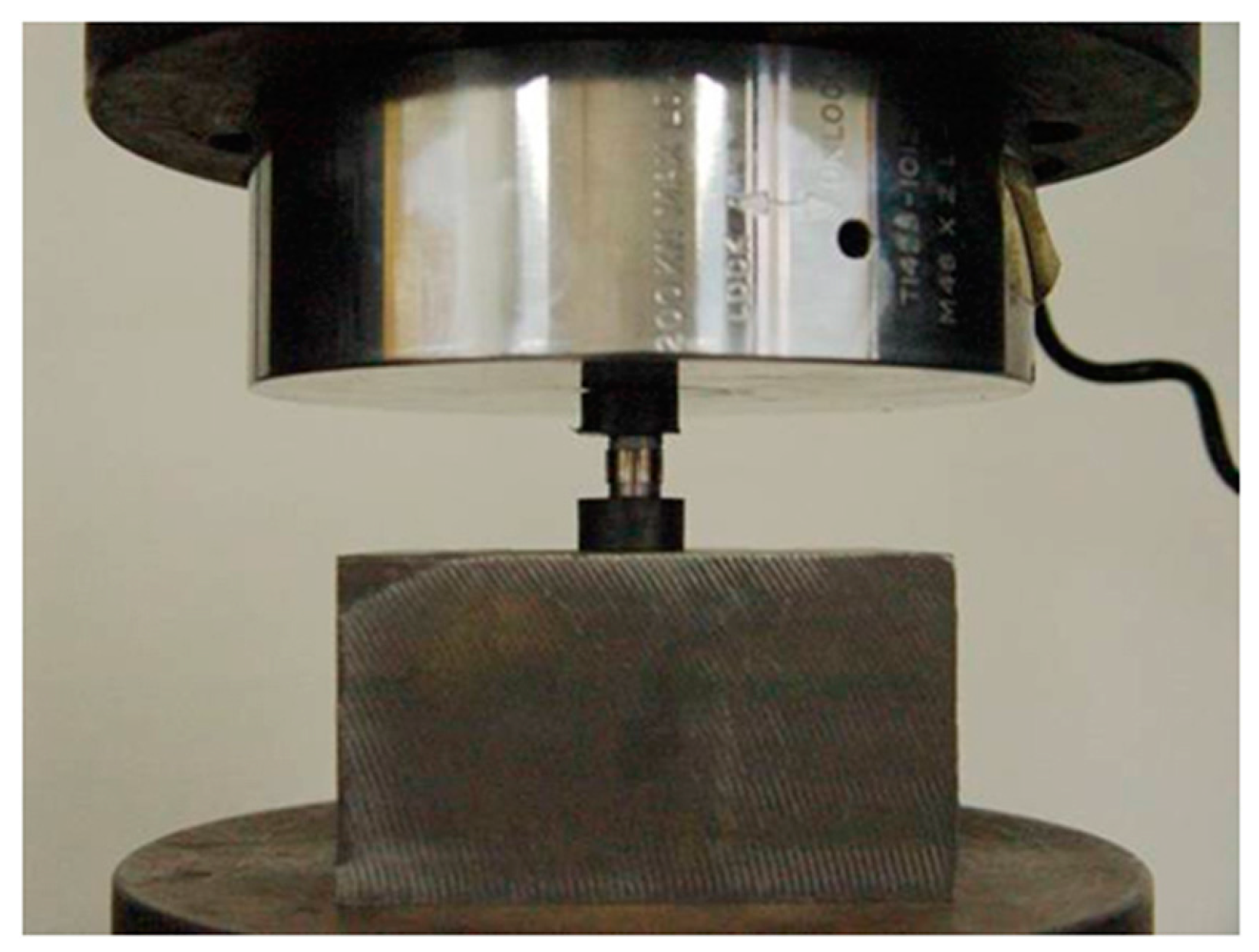
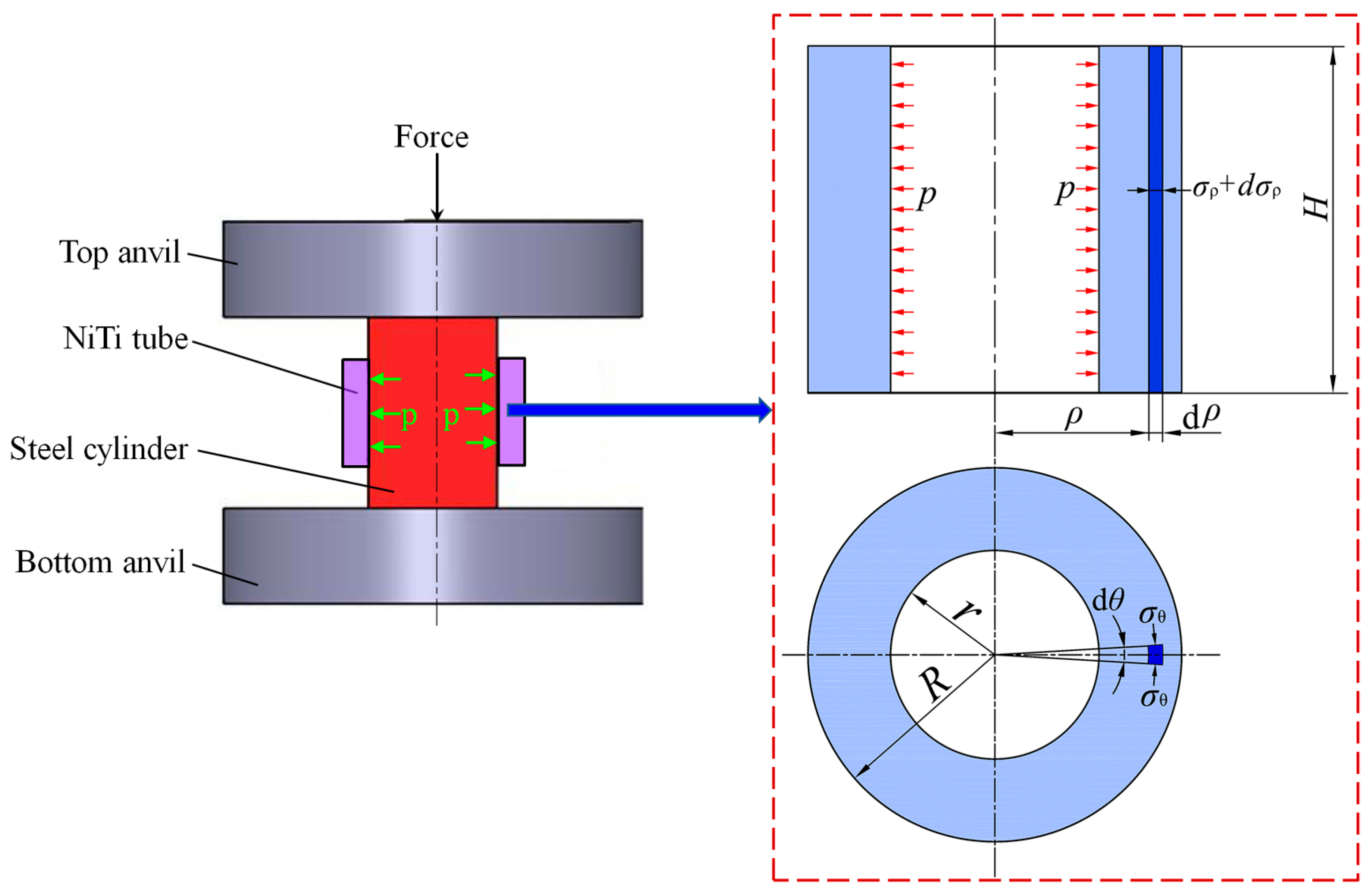

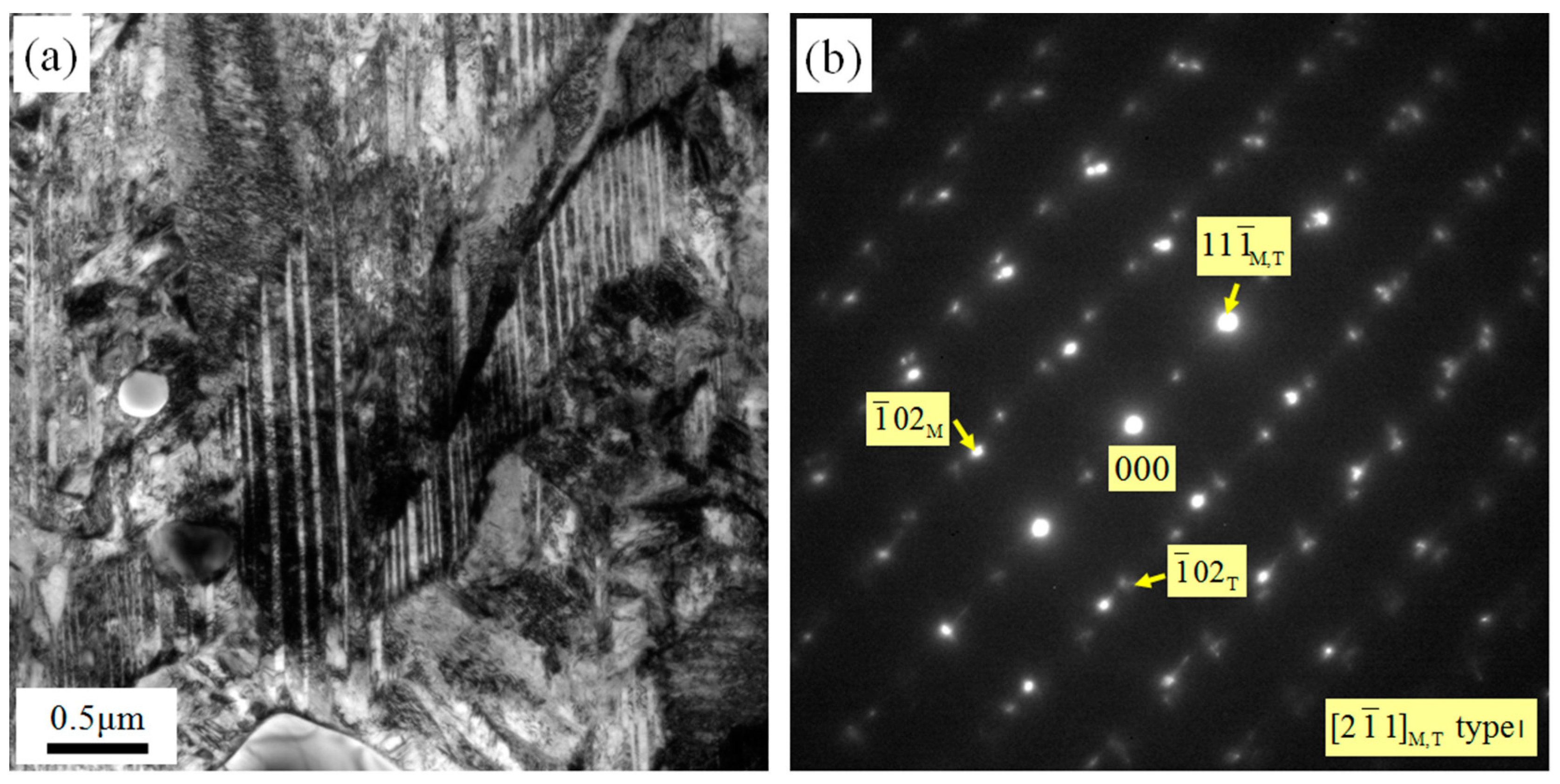
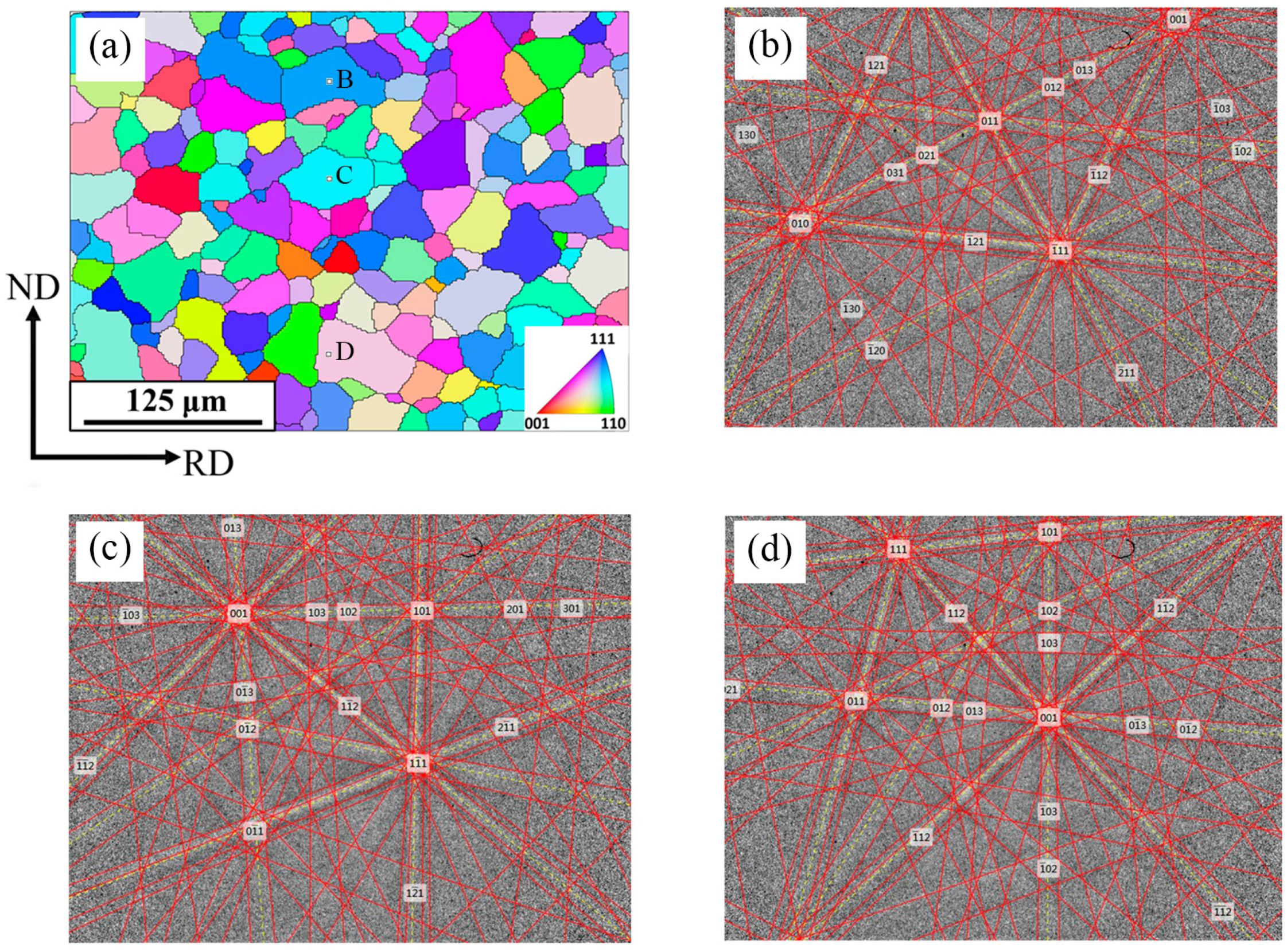

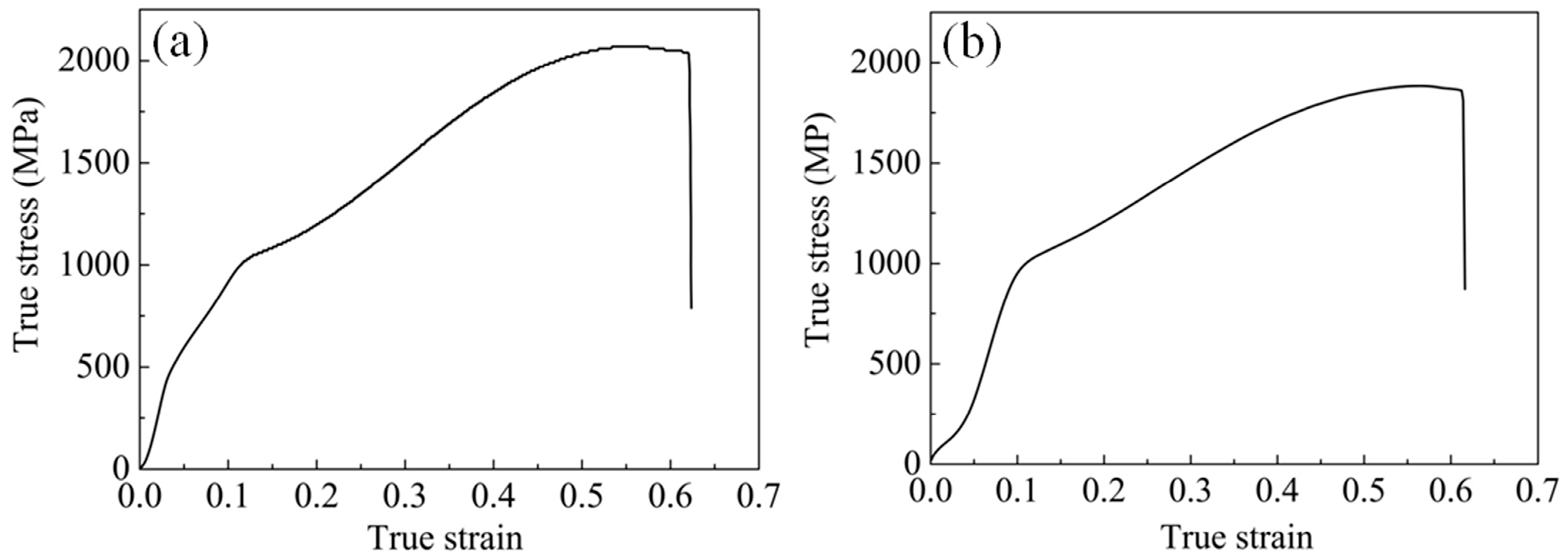
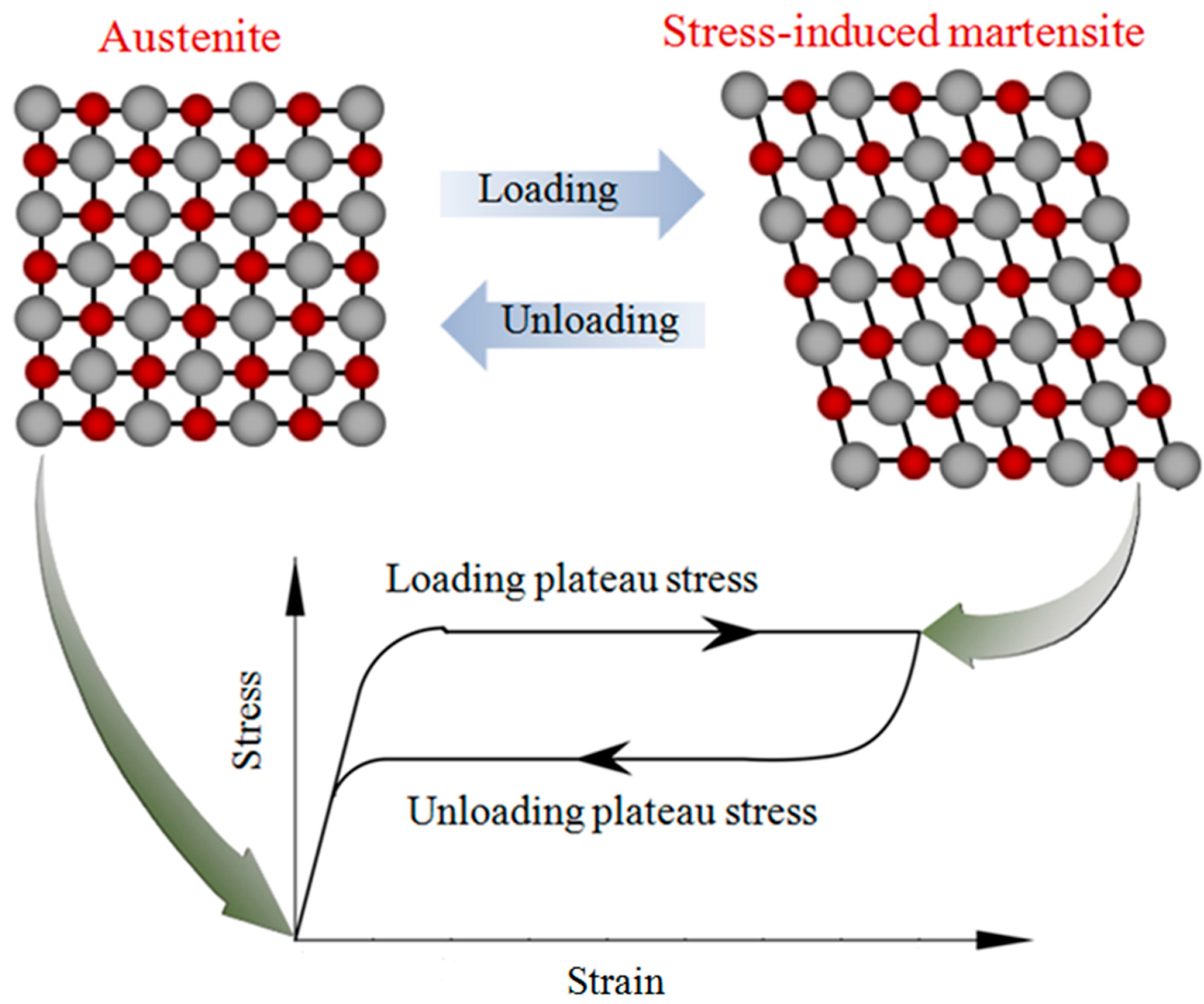
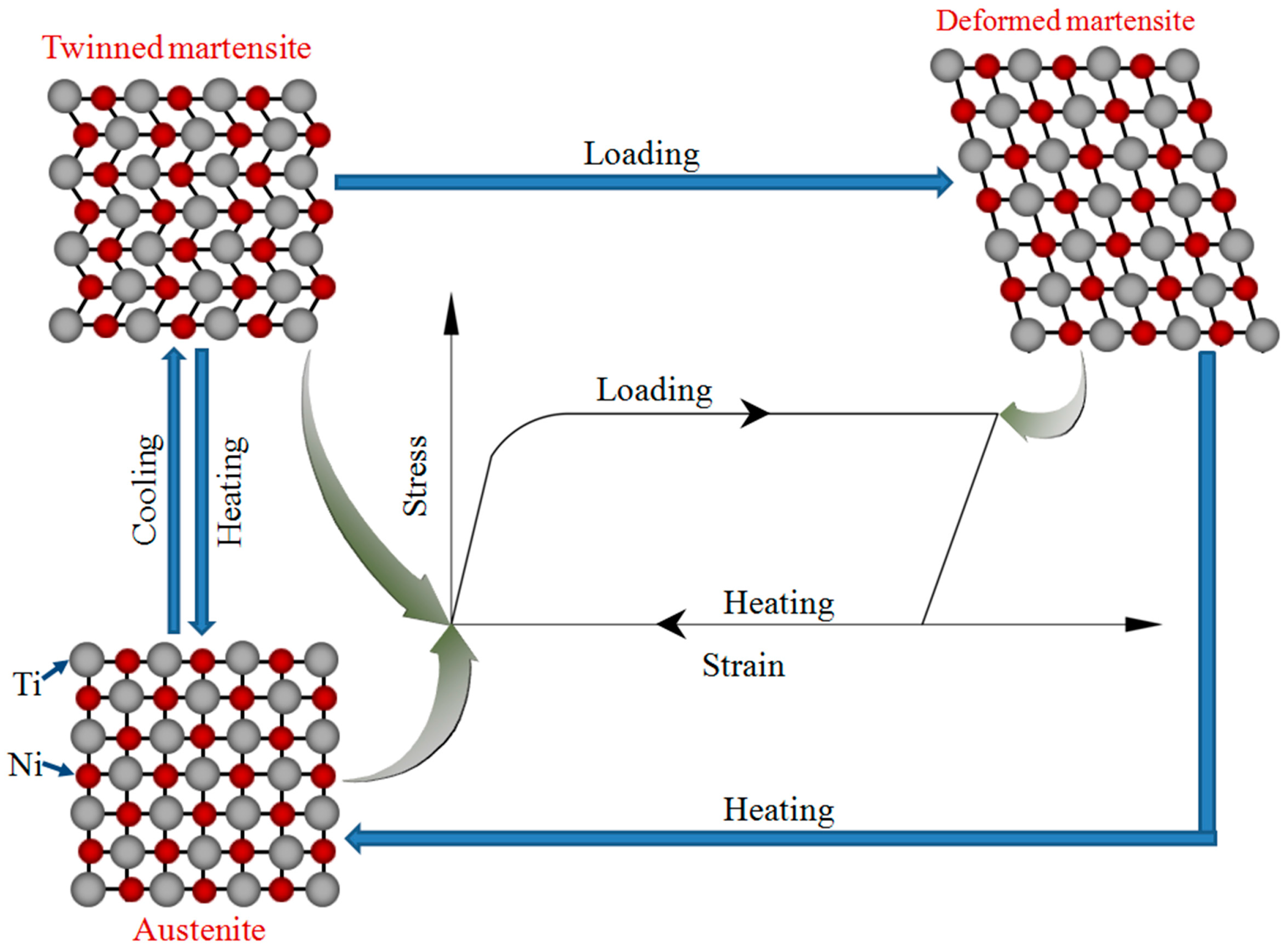
© 2017 by the authors. Licensee MDPI, Basel, Switzerland. This article is an open access article distributed under the terms and conditions of the Creative Commons Attribution (CC BY) license (http://creativecommons.org/licenses/by/4.0/).
Share and Cite
Jiang, S.; Yu, J.; Hu, L.; Zhang, Y. Investigation on Deformation Mechanisms of NiTi Shape Memory Alloy Tube under Radial Loading. Metals 2017, 7, 268. https://doi.org/10.3390/met7070268
Jiang S, Yu J, Hu L, Zhang Y. Investigation on Deformation Mechanisms of NiTi Shape Memory Alloy Tube under Radial Loading. Metals. 2017; 7(7):268. https://doi.org/10.3390/met7070268
Chicago/Turabian StyleJiang, Shuyong, Junbo Yu, Li Hu, and Yanqiu Zhang. 2017. "Investigation on Deformation Mechanisms of NiTi Shape Memory Alloy Tube under Radial Loading" Metals 7, no. 7: 268. https://doi.org/10.3390/met7070268



